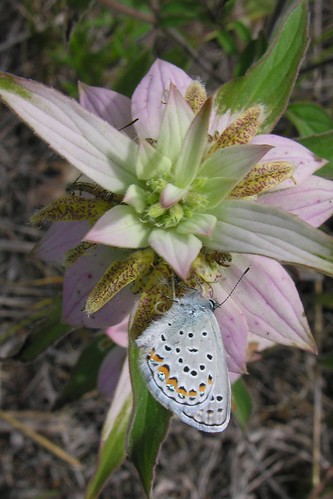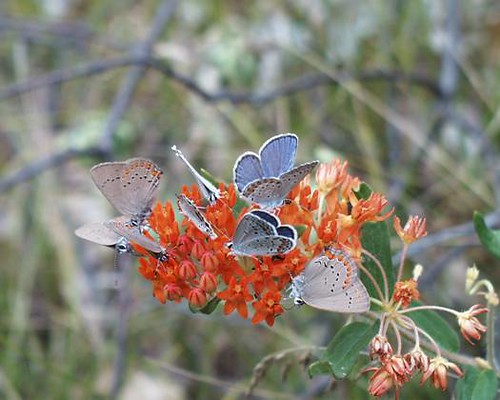
Karner Blue Butterfly on Dotted Horsemint on the Huron-Manistee National Forest. Photo credit: U.S. Forest Service
In honor of National Pollinator Week, the U.S. Forest Service joins organizations and individuals across the world to celebrate pollinators and share ways to help them survive and thrive.
Pollinators are vital to healthy ecosystems. Eighty percent of flowering plants require pollination by animals to successfully reproduce and produce seeds and fruits. Plants and pollinators together provide the basis for life by converting sunlight into food, materials for shelter, clean air, clean water, medicines, and other necessities of life.
Across the country, management of pollinators on national forests, grasslands and prairie is an important aspect of the Forest Service’s botany program. And, in the Great Lakes states, there is a unique opportunity to help pollinators while contributing to the overall health of the great lakes.
Located within the Great Lakes Basin, the Huron-Manistee National Forest’s Baldwin/White Cloud Ranger District provides important habitat for the endangered Karner Blue Butterfly. The butterfly depends on a rare natural community called savanna—open areas with scattered trees and abundant wildflowers. Savannas have declined to less than 1 percent of their former extent due to extensive reforestation, fire control efforts, human development, and the process of natural selection. To address this, the BWC Ranger District has been actively working to restore the area’s oak savanna habitat since 1992.
These savannas include upland and lowland areas, and are close to water bodies. Land managers use a number of treatment methods to reduce tree density and encroachment of trees and shrubs in order to promote growth of native grasses and nectar plants, especially wild lupine, the sole food source for the Karner Blue Butterfly when it is a caterpillar.
A dramatic increase in the BWC’s restoration efforts was made possible by Great Lakes Restoration Initiative funding. In 2015, the Forest Service managed 1,310 acres of savanna, a significant increase from its initial target of 400 acres per year.
And, it’s important to point out that none of this would be possible without the help of a small army of volunteers. Volunteers conduct surveys, restore habitat by seeding and planting native nectar species, and collect native nectar seed to be used for future restoration work.
The work is paying off.
Annual monitoring has found that Karner Blue Butterfly has occupied 14 areas of the BWC’s savanna areas through natural dispersion. They also found that other wildlife species in the area are increasing, including the red headed woodpecker, prairie warbler, frosted elfin, monarch butterflies and many more.

Cluster of Karner Blue Butterfly on Butterfly Weed on the Huron-Manistee National Forest. Photo credit: U.S. Forest Service
No comments:
Post a Comment
Note: Only a member of this blog may post a comment.